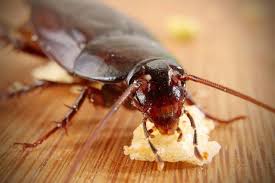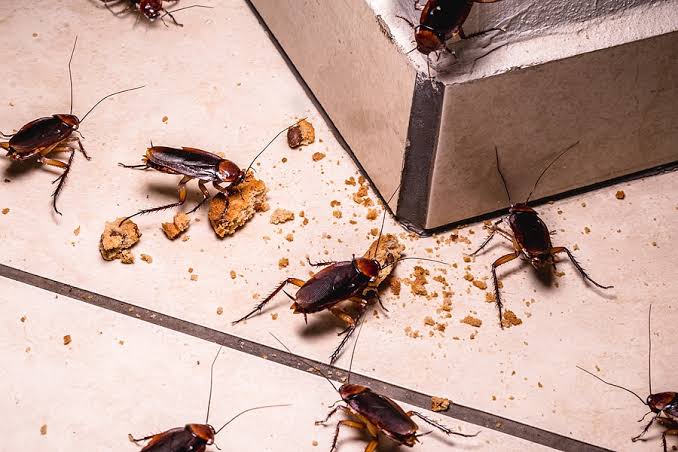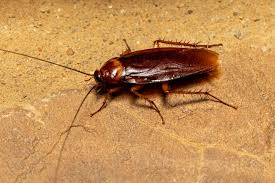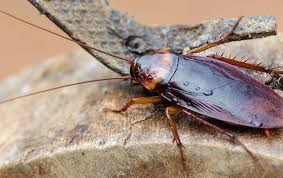Cockroaches, scientifically known as Blattodea, are fascinating insects with a long history on Earth. These resilient creatures have adapted to various environments, showcasing remarkable survival skills. Cockroaches belong to the insect order Blattodea, which includes diverse species found across the globe.
These insects have been around for millions of years, dating back to the time of dinosaurs. Their longevity and ability to adapt make them intriguing subjects of study. Cockroaches are generally small to medium-sized insects with flattened bodies and long antennae. They come in various colors, including brown and black, helping them blend into their surroundings.
One of the notable characteristics of cockroaches is their rapid reproductive capabilities. A single pair of cockroaches can produce a large number of offspring, contributing to their population growth. Their adaptability is further enhanced by their ability to consume a wide range of food, including both organic and decaying matter.
Cockroaches are nocturnal insects, preferring to be active during the night. This behavior allows them to avoid predators and take advantage of darkness for their activities. They are equipped with sensitive antennae, which help them navigate and locate food sources in the dark.
These insects are also known for their exceptional speed and agility. Cockroaches can move quickly, making it challenging for predators to catch them. Their nimbleness and adaptability contribute to their survival in diverse habitats, from urban environments to natural landscapes.
Despite their unsavory reputation, cockroaches play important ecological roles. They aid in the decomposition process by consuming decaying matter, contributing to nutrient cycling in ecosystems. However, their association with human habitats has led to concerns about hygiene and potential health risks.
Cockroaches are notorious for being resilient against various environmental conditions. They can survive in extreme temperatures and withstand harsh conditions that might prove fatal to other insects. These hardy creatures have developed mechanisms to resist certain insecticides, posing challenges for pest control efforts.
However, cockroaches, scientifically known as Blattodea, are ancient insects with remarkable adaptability and resilience. Their ability to thrive in diverse environments, rapid reproductive capabilities, and nocturnal behavior make them intriguing subjects of study. While often viewed as pests, it’s essential to recognize their ecological roles and understand the intricacies of their biology for effective pest management.
Read Also: Types of Wild Dogs and their Characteristics
Animals Affected by Cockroaches (Blattodea)

Cockroaches can have various impacts on animals, both domesticated and wild. One significant effect is on pets, such as dogs and cats, as well as on livestock. Cockroaches may pose health risks and provoke allergic reactions in animals due to their droppings and saliva. In some cases, ingestion of cockroach parts or feces can lead to digestive issues in pets.
Wildlife, particularly birds and small mammals, can also be affected by cockroaches indirectly. Cockroaches may compete for food sources with other small creatures, potentially disrupting local ecosystems. Additionally, the use of pesticides to control cockroach populations can have unintended consequences on non-target animals, causing harm to beneficial insects and other wildlife.
In agricultural settings, cockroaches can be a nuisance for livestock, affecting their well-being and potentially spreading diseases. The presence of cockroaches in food storage areas can contaminate animal feed, leading to health issues for livestock.
It’s essential to manage cockroach infestations responsibly to minimize their impact on animals. Proper sanitation, sealing entry points, and using targeted pest control methods are crucial to prevent the negative consequences of cockroaches on both domestic and wild animals.
Damages Caused by Cockroaches

Cockroaches can inflict various damages in both residential and commercial settings. These insects are notorious for their potential negative impacts on hygiene, health, and property. Here are some key areas where cockroaches can cause damage:
1. Health Risks: Cockroaches are known carriers of pathogens and allergens. Their presence in living spaces can lead to the contamination of food and surfaces, posing health risks to humans. Cockroach droppings, saliva, and shed skin can trigger allergies and asthma in susceptible individuals.
2. Food Contamination: Cockroaches are scavengers and can feed on a wide range of materials, including food items. Their foraging habits can contaminate food with bacteria and other harmful substances, leading to potential foodborne illnesses.
3. Structural Damage: In their search for food and hiding places, cockroaches can cause structural damage to buildings. They may chew on paper, cardboard, and even fabrics, impacting books, packaging materials, and clothing.
4. Electrical Damage: Cockroaches are attracted to warmth and may seek refuge in electronic devices and appliances. Their presence in such areas can lead to electrical damage as they may chew on wires, causing short circuits and malfunctions.
5. Odor Issues: Cockroach infestations can produce unpleasant odors. The pheromones released by cockroaches, along with their droppings, contribute to a distinctive and often disagreeable smell in infested areas.
6. Business Impact: Commercial establishments, such as restaurants and food processing facilities, are particularly vulnerable to cockroach infestations. Besides the health risks, the presence of cockroaches can tarnish a business’s reputation and lead to regulatory issues.
7. Crop Damage: In agricultural settings, certain species of cockroaches can damage crops by feeding on plant material. While not as common as other types of pests, cockroaches in agricultural areas can still have negative economic implications.
Effective cockroach control measures, including proper sanitation, sealing entry points, and targeted pesticide application, are crucial to preventing and minimizing the damages caused by these resilient insects. Regular inspection and prompt action are key components of successful pest management strategies.
Read Also: All You Need to Know About the Painted African Dog
Control and Preventive Measures

Controlling and preventing cockroach infestations involves a combination of proactive measures and targeted interventions. Here are some effective strategies:
1. Sanitation: Maintain a clean and hygienic environment. Eliminate food crumbs, spills, and standing water. Regularly clean kitchen appliances, countertops, and areas where food is prepared or stored.
2. Sealing Entry Points: Seal gaps, cracks, and openings around doors, windows, and utility entry points. Cockroaches can enter buildings through small openings, so closing off these potential entryways is essential.
3. Proper Food Storage: Store food in airtight containers to deny cockroaches easy access. Avoid leaving food out overnight, and promptly clean up crumbs and spills.
4. Reduce Hiding Places: Minimize clutter in living spaces. Cockroaches thrive in dark, secluded areas, so reducing hiding spots can discourage infestations. Regularly clean and declutter storage areas.
5. Regular Maintenance: Fix plumbing leaks promptly, as cockroaches are attracted to water sources. Repair any damaged screens and ensure that vents and chimneys are properly sealed.
6. Pesticides and Baits: Use insecticides and baits specifically designed for cockroach control. Follow safety guidelines and instructions carefully. Place baits in areas where cockroaches are likely to encounter them.
7. Professional Pest Control: In severe infestations or for persistent problems, seek the services of a professional pest control provider. Professionals can assess the extent of the infestation and implement targeted solutions.
8. Regular Inspections: Conduct regular inspections of potential hiding places, especially in kitchens and bathrooms. Early detection allows for prompt action before infestations become severe.
9. Educational Outreach: Educate residents and employees about cockroach prevention measures. Awareness can lead to a collaborative effort in maintaining a pest-free environment.
10. Integrated Pest Management (IPM): Adopt an Integrated Pest Management approach, combining various methods for effective and sustainable cockroach control. IPM involves using biological, mechanical, and chemical control methods in a coordinated manner.
By implementing a comprehensive approach that combines good hygiene practices, structural maintenance, and targeted pest control methods, you can effectively control and prevent cockroach infestations, creating a healthier and more comfortable living or working environment.
Frequently Asked Questions (FAQs) About Cockroaches (Blattodea)
1. Q: What attracts cockroaches to homes?
A: Cockroaches are attracted to homes by food crumbs, spills, and accessible water sources. They seek warm, dark hiding places, making kitchens and bathrooms ideal environments.
2. Q: How do cockroaches enter homes?
A: Cockroaches can enter homes through small openings, gaps, and cracks around doors, windows, and utility entry points. They may also hitch a ride in packages or grocery bags.
3. Q: Are cockroaches harmful to health?
A: Yes, cockroaches can be harmful to health. They carry pathogens and allergens that can contaminate food and surfaces, leading to allergic reactions and potential health issues.
4. Q: Can cockroaches fly?
A: Some cockroach species have wings and can glide short distances, but not all cockroaches are capable of sustained flight. Flying is more common in warmer climates.
5. Q: How fast do cockroaches reproduce?
A: Cockroaches are known for their rapid reproductive rates. In ideal conditions, a pair of cockroaches can produce a large number of offspring within a short period.
6. Q: Do cockroaches only infest dirty homes?
A: Cockroaches can infest any home, regardless of cleanliness. While they are attracted to food and water sources, even well-maintained homes can experience infestations.
7. Q: What should I do if I find cockroaches in my home?
A: Take immediate action by cleaning thoroughly, sealing entry points, and using cockroach baits or insecticides. Consider professional pest control services for severe infestations.
8. Q: Can I get rid of cockroaches on my own?
A: Yes, smaller infestations can often be addressed with DIY methods. However, for larger or persistent infestations, it’s advisable to seek professional pest control assistance.
9. Q: How do I prevent cockroaches in my kitchen?
A: Keep the kitchen clean by regularly wiping surfaces, storing food in airtight containers, and fixing leaks promptly. Seal entry points and conduct regular inspections.
10. Q: Are there natural ways to repel cockroaches?
A: Some natural repellents include bay leaves, catnip, and essential oils like peppermint. However, these methods may not be as effective as professional pest control measures.

